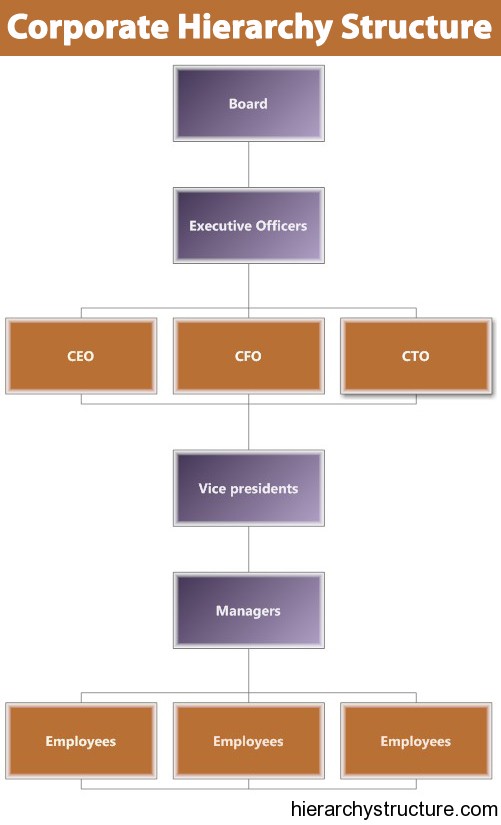The corporates and all sorts of organizations nowadays prefer to arrange the employees within the organization in the form of a corporate hierarchy structure. A hierarchical structure is established formally with a purpose to give shape to organized activities.
In organizing an organization we talk of structure and flexibility at the same time. The good example to understand this corporate hierarchy structure is to imagine a tree like structure with root at the top, and branches coming out of root, and then more branches emerging from the above level branches. This kind of interlinked structure is known as hierarchical structure in which every level of employees is directly connected only with its adjacent levels but indirectly connected to the whole corporate organization through links.
A well tightened hierarchical structure is easy for management in normal times but may also become a problem when winds of change start blowing. So business and corporate hierarchies need to be organized in hierarchical structure, run the business in a managed way but also at the same time requires flexibility since it is environmentally dependent on external factors on which structure or organization has no control. Hence organizations as a structure should be purposefully kept a little lose to accommodate responses to both internal and external changes. This way of structuring the organization is also known as managerial acrobatics.
A hierarchical structure can be visualized as a pyramid or an inverted tree. The levels in the hierarchical structure include board, executive officers, vice presidents, managers, and employees at the lowest level. The corporate officer hierarchy comprises of the following levels:
- Board – The board of directors represent a group of people who take active role and participate actively in the decision making process of the organization. Generally board members appoint a chairman from amongst them who becomes responsible for leading the board of directors. The boards of directors in any company are the highest stockholders of the organization.
- Executive Officers – The executive officers like CEO, CFO, and CTO are basically responsible for success and functioning of an organization. All the employees at all the levels are accountable to the executive officers; these officers participate in deciding the organizational goals & policies, and for hiring other high level officers for the organizations.
- Vice presidents – They are the officials who are in charge of individual departments in the organization, like marketing, human resource, production and sales etc. They are responsible for implementing the policies of the organization and working towards the achievement of goals as decided by executive officers.
- Managers – Below the vice presidents of the organizations, there comes the layer of managers who are in charge of certain functions in a particular department. These managers are responsible for communicating directly with employees, and executing the tasks assigned to them by upper authorities within stipulated deadlines.
- Employees – This group constitutes the lowest level in a corporate hierarchy who actually perform tasks in the organization. These people are hired for their skills and they work for organization as directed by their managers.

